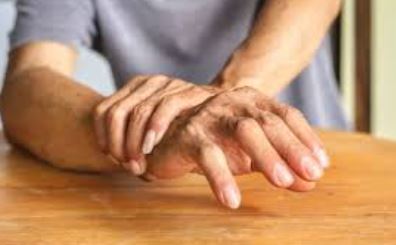Ayurvedic approach in the management of Kampavata (Parkinson’s Disease)
DOI:
https://doi.org/10.21760/jaims.9.7.39Keywords:
Kampavata, Vatavyadhi, Ayurveda, Parkinson’s diseaseAbstract
Parkinson’s disease is known as Kampavata in Ayurvedic texts. It is a progressive neurological-degenerative disorder. Parkinson’s disease primarily affects the neurons in the area of the brain called the substantia nigra. It is now known that the death of the substantia nigra causes a dopamine deficit, which in turn causes Parkinson’s disease symptoms. In Ayurveda, 80 kinds of Vata diseases (Vatavyadhi) are described in Samhita. Vepathu has been mentioned in Charak Samhita as one of the eighty types of Nanatamaja disease of Vata. Globally, Parkinson's disease lacks a conclusive cure in traditional medicine, except anticholinergic medications used palliatively together with dopa decarboxylase inhibitors and levodopa. Ayurvedic therapy aims to maintain neuro-nutrition and balance Vata dosha through Rasayana remedies.
Downloads
References
Sushruta, Sushruta Samhita, edited by Vidya Yadavji Trikarmaji Acharya, Chaukambha Surbharti Prakashan, Varanasi, 2008, Nidana sthana 1 verse 67-69.
Charak Samhita with Ayurveda Dipika Commentary of Chakrapani Datta, Ed. Yadavji Trikarma Ji Acharya, Chaukhambha Surbharti Prakashan, Varanasi. Charaka Samhita Chikitsa Sthan Chapter 28 verses 223, 224, and 228.
Charak Samhita With Ayurveda Dipika Commentary Of Chakrapani Datta, Ed. Yadavji Trikarma Ji Acharya, Chaukhambha Surbharti Prakashan, Varanasi. Charaka Samhita Shidhisthana Chapter 05 verse 57.
De Long MR, Juncos JL. Harrison’s Principles of Internal Medicine – 17th edition; Chapter: 366; P. 2549-2557.
Madhavakara. Ed Brahmanand Tripathi; Madhava Nidanam with Madhukosha teeka; Chaukambha publications Vol. 1, Chapter.22, p.no.551
Basavaraja Acharya, Basavarajeeyam; Chaukambha publications, 2005; Chapter 6 th, p. 100.
Salby G. Parkinson's disease. In: Vinken PJ, Bruyn GW, ed. Handbook of clinical neurology, vol. 6. North-Holland, Amsterdam, 1968:173-211).
Charak Samhita With Ayurveda Dipika Commentary Of Chakrapani Datta, Ed. Yadavji Trikarma Ji Acharya, Chaukhambha Surbharti Prakashan, Varanasi. Charaka Samhita Chikitsa Sthan Chapter 28.
Parkinson’s Disease Foundation. Available from www.pdf.org.
Giurgea CE. The Nootropic concept and its prospective implications. Drug Dev Res. 1982; 2:441-6.
Vagbhata, Astanga Hridya, With Commentary of Arun Dutta and Hemadri edited by Pandit Hari Sadashiv Shastri Paradkara, Chaukhambha Surbharti Prakashan, Varanasi, Reprint 2007, Nidana Sthan, Chapter 15 verse 29.
Gourie-Devi M, Venkataram BS. Concept of disorders of muscles in "Charka Samhita", an ancient Indian medical treatise - relevant to modern myology. Neurology (India) 1983; 31:13-14.
Charak Samhita with Ayurveda Dipika Commentary of Chakrapani Datta, Ed. Yadavji Trikarmaji Acharya, Chaukhambha Surabharti Prakashan, Varanasi. Charaka samhita Sutra Sthana Chapter 17 verse 14.
Basavarajaacharya. Basavarajeeyam; Chaukambha publications, 2005; Chapter 6 th, p.234
Development of a dual-hit model of Parkinson's disease by combining environmental and genetic risk factors, Mulcahy, Pádraig John 2012-06-06).
Jankovic, J., Goldman, L. and Bennett, W.B. Saunders, Parkinsonism in Cecil Text book of medicine, NewYork 2000,p- 460.
Gourie devi, M. And Venkataram, B.S. Concept of disorders of muscles in Charaka Samhita, an ancient Indian medical treatise relevance in modern myology, neurology (India), p-31.
Brahmananda Tripathi edited. Charaka Samhita, Charaka Chandrika Hindi commentary part 2 Siddisthana, chapter 1, reprint 2009, Chaukambha Surbharati Pratishtana, Delhi. P- 1170.















